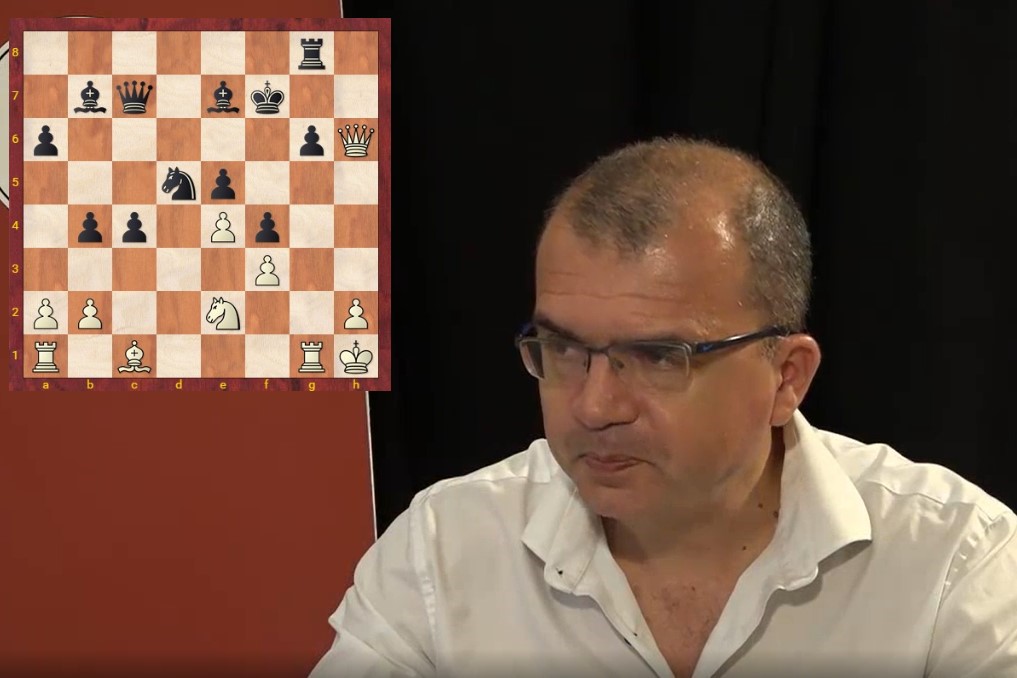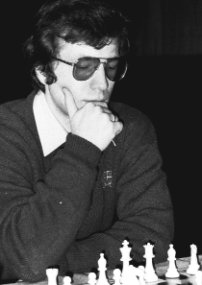


 An experienced trainer, Ivan Sokolov has worked with the Iranian team for a number of years, helping the likes of Alireza Firouzja and Parham Maghsoodloo develop their talent. In his first FritzTrainer series for ChessBase, he showcases a pragmatic style, focusing on general ideas rather than specific lines. Doubtlessly, the games presented are immensely instructive.
An experienced trainer, Ivan Sokolov has worked with the Iranian team for a number of years, helping the likes of Alireza Firouzja and Parham Maghsoodloo develop their talent. In his first FritzTrainer series for ChessBase, he showcases a pragmatic style, focusing on general ideas rather than specific lines. Doubtlessly, the games presented are immensely instructive.
In volume 1 of his 4-part series on middlegames, Sokolov explores four key themes involving pawns — minor sacrifices, pawn rollers, voluntary creation of a pawn island and ideas related to g and h-pawns.
One of the games analysed in the third section devoted to rolling pawns is Boris Gelfand versus Aleksey Dreev (pictured) from the 1993 Tilburg Tournament, which included a couple of magnificent long-term sacrifices by Black.
1. d4 d5 2. c4 c6 3. Nf3 Nf6 4. Nc3 e6 5. e3 Nbd7 6. Bd3 dxc4 7. Bxc4 b5 8. Bd3 Bb7 9. O-O a6 10. e4 c5 11. d5 c4 12. Bc2 Qc7 13. Nd4 e5 14. Nf5 g6 15. Nh6 Nh5
The game started as a Semi-Slav Meran, a very popular opening line at the time.
In this critical position, Sokolov points out that Gelfand misjudged the position when he placed his queen on f3. Eighteen years after this game, none other than Magnus Carlsen entered this line with White against Alexei Shirov, and his 16.g3, preventing the knight from getting to f4 proved to be an excellent response — which led to a rather quick victory.
16. Qf3 Nf4 17. Nxf7 Kxf7 18. g3 g5 19. gxf4 gxf4
Sokolov considers that Gelfand probably thought he had a good position here, but he points out that it was not as good as he might have hoped. Despite the black king being weakened, White does not have many pieces ready to attack. There is no clear path to activate the white army.
20. Qh5+ Ke7 21. Qh4+ Kf7 Black is apparently happy with a repetition, but it is Gelfand who decides to keep playing.
22. Bd1 Rg8+ 23. Kh1
This is the first position Sokolov employs to showcase the potential strength of rolling pawns. White is attacking h7, and there is nothing wrong with simply defending via 23...Rg7, preparing to hide the king on g8.
Instead, however, Dreev goes for a deep positional idea, one that was not at all forced.
23... Nf6 24. Bh5+ Rg6 Giving up an exchange!
25. Bxg6+ hxg6
Sokolov stops here to take a more in-depth look into Dreev’s idea. He has opened up the h-file, has somewhat safeguarded his king, and more importantly is threatening to push his b-pawn to expel the white knight from c3, creating a pathway to activate his dangerous light-squared bishop on the long diagonal.
26. Rg1 Be7 27. Qh6 Rg8 28. f3 b4 29. Ne2
By giving up an exchange, Black grabbed the initiative, and he used it brilliantly. Here, an inspired Dreev went for yet another sacrifice, capturing on d5 with his knight to activate the aforementioned bishop.
29... Nxd5 30. exd5 Bxd5 Black now has two pawns for a rook, but his mobile pawns and active pieces give him more than enough compensation. Moreover, it will be incredibly difficult for Gelfand to deal with his opponent’s threats.
Sokolov emphasizes that Black has no direct way to win, which demonstrates how deep Dreev’s ideas were, both when he sacrificed an exchange and when he gave up a piece for two pawns in the centre.
31. Rf1 Bf6 32. Qh7+ Rg7 33. Qh3 Be6 34. Qg2
How to improve Black’s position now? Get those pawns rolling down the board!
34... g5 35. a3 g4
This was Gelfand’s last chance to fight for a draw. After seeing his opponent sacrificing material for the initiative, it was his turn to defensively give up something to get at least some counter-chances. White needed to play 36.Bxf4, when after 36...exf4 37.fxg4 Rxg4, White has 38.Qf3, with hopes to save a half point. “It was urgent”, as Sokolov puts it.
Instead, White opened up the a-line for his rook by capturing on b4.
36. axb4 Bd5 37. Nc3 gxf3 38. Qf2 Bb7 39. Ra5 Qd7 40. Nd5
White tries to block the long diagonal, but it is now too late. In fact, Dreev does not avoid a queen exchange, as he has a winning attack even with the queens off the board!
40... Bxd5 41. Qd2 Bc6 42. Qxd7+ Bxd7 43. Rxa6 Bh3
There is no way to escape for Gelfand. Sokolov calls it “one of the best games when it comes to rolling pawns that I’ve seen in my life”.
44. Rf2 Bh4 0-1
| Advertising |